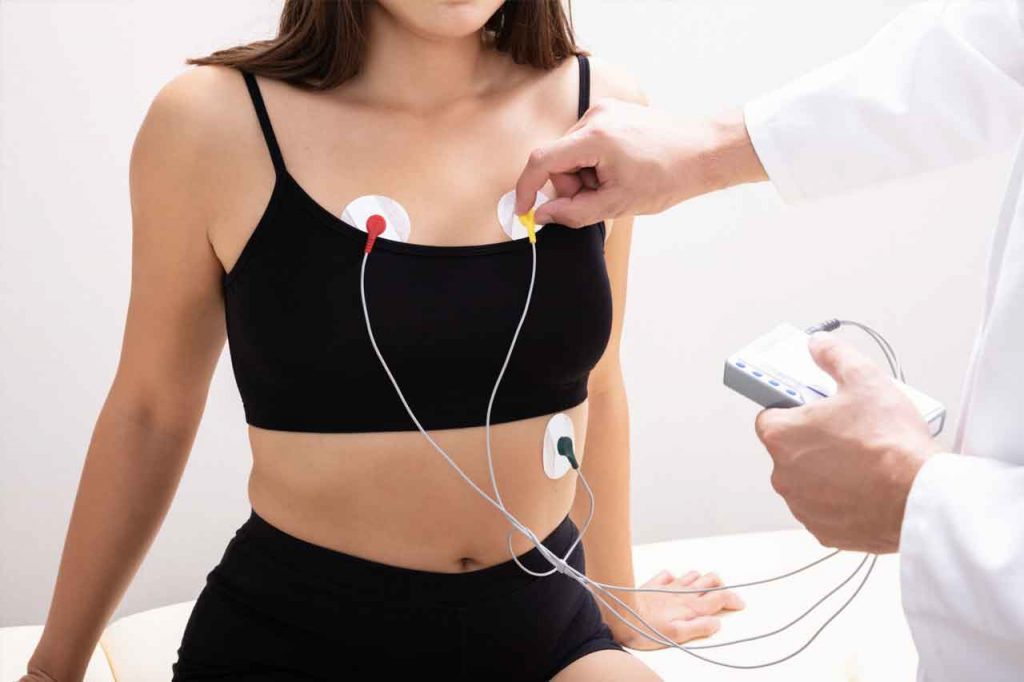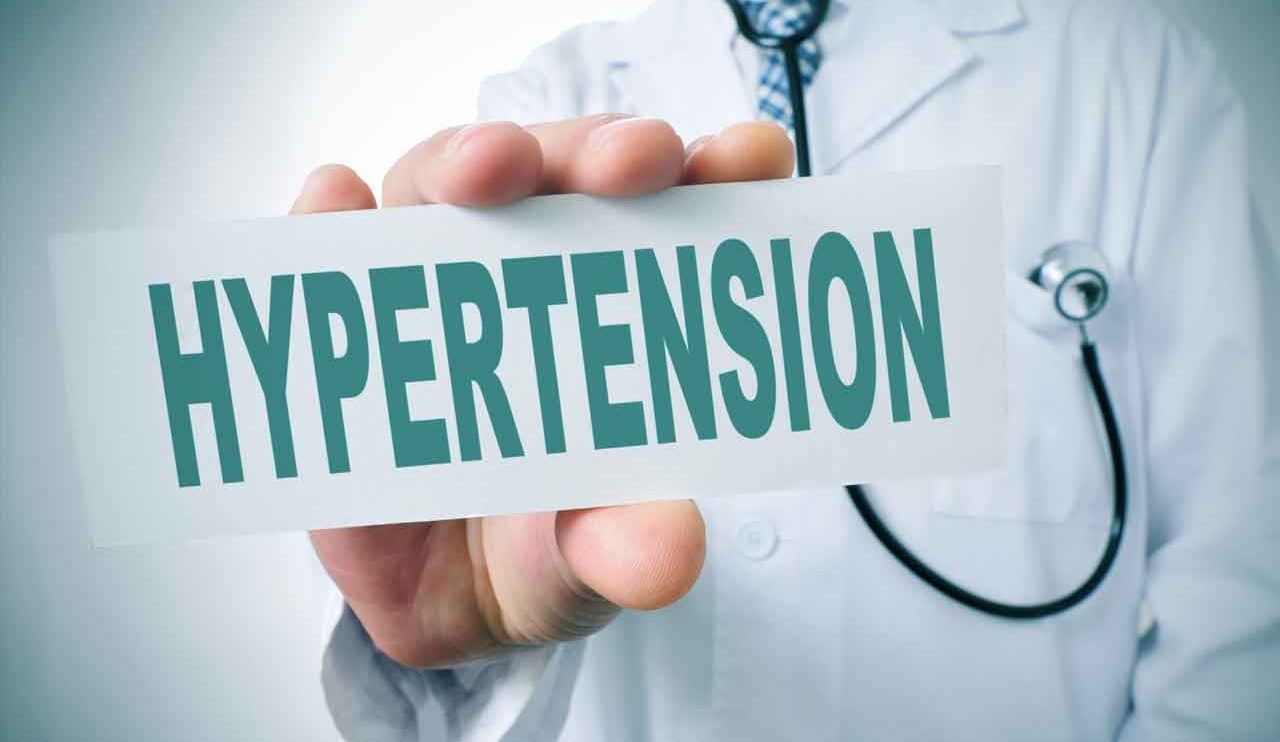What are the values of normal blood pressure? What are the values of high blood pressure? What are the symptoms of high blood pressure? What are the reasons for this? Who needs treatment and how?
What is blood pressure?
The blood carries oxygen and other substances necessary for the tissues of the body. The heart is a pump that pumps the blood to the tissues. The contraction of the heart creates pressure that pushes the blood to flow in the blood vessels (arteries and veins).
The pressure is higher while the heart contracts (systole) and lower while the heart relaxes and expands (diastole). The blood pressure in the arteries does not drop to zero, even when the heart is relaxed.
The accepted units of measurement for blood pressure are millimeters of mercury (mmHg).
What is normal blood pressure?
The typical values for normal blood pressure are 120 mmHg during systole (systolic blood pressure) and 80 mmHg during diastole (diastolic blood pressure).
It is accepted in writing to write 120/80 and in speech to say “120 x 80”.
What is high blood pressure (hypertension)?
Blood pressure whose values are above 140/90 (ie systolic pressure above 140 mmHg and/or diastolic pressure above 90 mmHg) is considered high blood pressure (hypertension or HTN for short).
Why is it determined that blood pressure above 140/90 is high?
This threshold was determined after it became clear that those who have blood pressure higher than 140/90 for a long time (years) are at increased risk of suffering from diseases of the heart and blood vessels, including heart attack , stroke , damage to kidney function, damage to vision.
It was also found that treatment to lower blood pressure reduces the risk of the appearance of these diseases, so it is important to diagnose them and treat them.
What are the symptoms of high blood pressure?
High blood pressure usually has no symptoms, which is why it is called the u0022silent killer.u0022 Only if the blood pressure is extremely high (systolic pressure close to 200) can it u003ca href=u0022https://hostandcare.com/medical-guides/stroke-symptoms-causes-treatment/u0022u003ecause symptomsu003c/au003e such as headache, vision changes, chest pain and shortness of breath.
How common is high blood pressure, and who is at increased risk?
20% to 40% of adults suffer from high blood pressure. As you get older, the risk of high blood pressure increases, and after the age of 60, the prevalence of this disease is more than 60%. This is a disease that usually does not recover from it, but accompanies the person until the end of his life (chronic disease).
Other factors that increase the risk of high blood pressure are the lack of physical activity or too little physical activity and being overweight (lack of exercise and excess weight usually worsen as you get older).
What are the causes of high blood pressure?
Although it is a common disease, there is no complete answer to this question. We still do not know all the causes of high blood pressure.
Blood vessels are made of muscle tissue. When this muscle contracts, the diameter of the blood vessels decreases. Reducing the diameter of blood vessels causes an increased pressure on the blood flowing through them.
The degree of contraction of the blood vessel walls is determined by various hormones, some of which are secreted by the kidneys. The amount of fluid and salt in the body also determine the volume of blood that flows through the blood vessels: the greater the amount of water and salt, the higher the blood pressure. The amount of water and fluids in the body is also determined to some extent by the kidneys.
In elderly patients there is probably another mechanism that causes high blood pressure: the hardening of the blood vessels.
The heart contracts and pumps a lot of blood into the main arteries in a short time (about 70 milliliters in about half a second). It is impossible to circulate blood at such a high rate throughout the body, and therefore the blood temporarily accumulates inside the large arteries – which are flexible blood vessels that can expand and temporarily contain the “excess blood” and gradually flow it into the rest of the pipeline – into the smaller arteries and into the veins.
The large blood vessels can be compared to a balloon: the heart contracts and fills the balloon, and then the balloon gradually deflates into the rest of the tubing.
As we know, when we inflate a flexible balloon, we don’t have to exert much, and we can put in a large volume of air without exerting strong pressure with the help of the cheeks. On the other hand, when we inflate a rigid balloon, in order to introduce the same amount of air, we have to apply strong pressure with the help of our cheeks.
As people age, their blood vessels become stiffer, so the blood ejected from the heart has to push harder against the stiff artery walls, and therefore the pressure created in them is high.
In most cases, the causes of high blood pressure are those described. Such blood pressure is considered “normal” and is also called “primary blood pressure” (Essential Hypertension or Primary Hypertension).
What is secondary hypertension?
In a small number of cases (5% to 15%) there is another reason that causes the blood pressure to rise (kidney problems, hormone problems, taking medication, etc.). Such hypertension is called “secondary”.
When a diagnosis of high blood pressure is received, there are circumstances in which we will assume that it is not normal hypertension, but we will look for a special reason that causes the high blood pressure.
Such situations should be suspected when it comes to young people who have not yet turned 40 years old and who suffer from severe hypertension (over 160/100) or when it comes to patients whose high blood pressure appeared (or got very worse) suddenly.
It should also be suspected that this is secondary hypertension if the patient’s medical history includes one or more of the following conditions:
- Kidney or urinary tract problems.
- Use of medications such as steroids or nasal drops.
- Sudden onset of sweating or flushing or palpitations.
- Thyroid problems.
- Snoring and sleep apnea.
What is malignant hypertension?
Malignant hypertension is very high blood pressure (more than 180/110) that usually rises suddenly and very quickly.
This is a medical emergency that is usually accompanied by symptoms (headache, visual disturbances, chest pains, shortness of breath, drowsiness, convulsions) and which requires rapid evacuation to the emergency room.
Blood pressure and the corona epidemic
One of the risk factors for getting sick with the corona disease (COVID 19) is high blood pressure. When the epidemic broke out, the fear was raised that certain drugs to treat high blood pressure could increase the risk of contracting the virus.
These are drugs from the family of ACE inhibitors (such as Tritis, Ramipril, Silril) or from the family of angiotensin receptor blockers (such as Oxer, Luten, Divan).
In retrospect, it turned out that the fear was not justified, and it is even possible that these drugs may ease the course of the pulmonary disease in those infected with the virus.
Therefore, the unequivocal guideline today is that patients who have been advised to use these drugs should continue to take them and not stop because of the fear of contracting the corona virus.
How is high blood pressure diagnosed?
Since in most cases you don’t feel that your blood pressure is high, to find out you need to measure your blood pressure from time to time.
Blood pressure can be measured using a simple device during a visit to the family doctor, and it can be measured even at home, using a home blood pressure monitor that can be purchased in pharmacies or pharmaceutical chains.
When to do a screening test for high blood pressure?
When it comes to a screening test, blood pressure must be checked in every adult over the age of 18. After a normal initial test, the test must be repeated at intervals of between one and five years. As the values are more normal (lower), it is possible to increase the interval between tests.
What is the “white coat syndrome”?
There are people who suffer from the “white coat syndrome”, which means that the very examination in the presence of the doctor or nurse causes excitement and anxiety, and the result is that blood pressure is measured that is too high which does not characterize the “true” values of that person.
In order to overcome this problem, the measurement must be repeated once more, or even twice, with a difference of a minute or two between the tests, and usually the values in the repeated tests will be lower, and it is acceptable to see them as the real values.
What are the benefits of measuring blood pressure at home?
Another possibility is to measure the blood pressure alone at home, and even in this case it is sometimes useful to immediately repeat the test to examine whether the initial measurement is real or expresses excitement and anxiety.
It should be noted that home measurements are considered better representatives of the real situation compared to clinic tests.
However, since the patient is calmer at home, and lower values can be expected, even values above 135/85 in home tests indicate high blood pressure (compared to values above 140/90 in tests conducted in the clinic).
Three tips for measuring blood pressure
- It is advisable to check the blood pressure at different times of the day (eg in the morning and in the evening).
- It is advisable to check the blood pressure the first times in both arms, and if a difference is obtained between the two arms, then the higher blood pressure of the two arms is the determining factor. Once you know in which of the two arms the blood pressure is usually higher, you must make sure to measure in the arm where the blood pressure is higher.
- It is important that the cuff size of the pressure gauge fits the patient. In an overweight patient using a sleeve that is too small, values will be obtained that are slightly higher than the true values. On the other hand, if the patient uses a cuff that is too large, values will be obtained that are lower than the real values.

What is a blood pressure holter?
There is another diagnostic tool that may be useful for some patients – blood pressure Holter . It is a device that is mounted on the arm for 24 hours and automatically, repeatedly measures the blood pressure both day and night.
This is an effective tool for getting a more comprehensive picture of blood pressure throughout the day. It also helps neutralize the element of mental stress during the measurement (“white coat syndrome”). The threshold for high blood pressure in Holter measurement is 130/80 (average of day and night).
Who needs treatment and how are they treated?
After collecting a few measurements you can estimate the meaning of the blood pressure. Values below 120/80 are considered optimal, but even slightly higher values are usually not necessary – as long as they are not above 140/90.
As mentioned, high blood pressure over time involves morbidity of the heart and blood vessels, and the goal of treatment is to reduce the risk of having these diseases.
Therefore, when it comes to those who are at very high risk (patients whose medical history includes diseases of the heart and blood vessels such as myocardial infarction or stroke), the tendency is to give them treatment to reduce blood pressure – even to values that are slightly lower than 140/90.
Before starting the treatment, the damage already caused by the high blood pressure must be assessed.
The test is done on “target organs” – organs that tend to be damaged as a result of high values of blood pressure: checking if there is thickening of the heart muscle (according to ECG or echocardiography ), checking if there is a history of arrhythmias such as atrial fibrillation, checking the Kidney function (they do a urine protein test and a blood test for kidney function) and refer to an ophthalmologist to check the condition of the blood vessels in the retina.
When the blood pressure values are not very high (ie above 140/90 but below 160/100), the first step in the treatment will usually be lifestyle change instructions:
- Weight loss for those who are overweight (the required target is a BMI below 30; the desired target is a BMI between 20 and 25).
- Limiting the consumption of salt: up to 5 grams of salt per day (which is 2 grams of sodium) per day. At the same time, one should increase the consumption of fruits and vegetables and limit the consumption of saturated fat.
- Aerobic exercise (30 minutes at moderate intensity, 5 to 7 times a week).
- Smoking rehab.
- Moderate consumption of red wine.
When do you start medication?
When it comes to moderate values of high blood pressure (below 160/100), drug treatment is started if satisfactory results have not been achieved after a few months of changing the lifestyle; drug treatment is started immediately if it is a patient who suffers from very high blood pressure (more than – 160/100).
In the elderly (65 years old and older and especially 80 years old and older) – especially if they are thin and frail – the tendency is to minimize medication as much as possible.
If their blood pressure is very high – above 160/90 – there is no escape from drug treatment, however the decision to treat values that are above 140/90 but below 160/90 is conditional on the adults being able to tolerate the treatment well without significant side effects (such as weakness and dizziness ).
If a decision has been made to start drug treatment, it is common today to start a combination of two different preparations, preferably two preparations combined in one pill (such as Exforge, Treatise Comp, Oxaar Plus). A single preparation is sufficient if the blood pressure values are borderline or when it comes to the elderly.
The initial goal is to reach blood pressure values that are lower than 140/90, but in most patients the goal is to reach even lower values: less than 130/80 – if the treatment is well tolerated (without side effects) and if the patient is not elderly (in the elderly the goal is not drop below 130 systolic).
After starting the drug treatment, you must continue to monitor the blood pressure values and check if the goals have been reached after 3 to 6 months of treatment.
Which doctor treats high blood pressure? When should you contact a specialist?
High blood pressure is a very common condition, and family doctors are knowledgeable and experienced in diagnosing and treating it. In most cases there is no need for the involvement of another doctor.
For exceptional cases, there are dedicated clinics for high blood pressure. The doctors involved in the field are nephrologists, specialists in kidney diseases.
Who needs a referral to a high blood pressure clinic?
Such a referral is needed by patients who are suspected of suffering from secondary high blood pressure as well as patients whose high blood pressure is resistant to treatment (that is, the medications prescribed by the family doctor did not achieve the required goal).












Add Comment